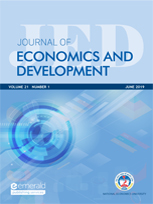Qualification mismatch in the labor market and the impact on earnings: evidence from Vietnam
Abstract
PurposeThe purpose of this paper is to investigate the incidence and earning effects of the vertical mismatch between attained and required educational qualifications in a developing country's labor market.
Design/methodology/approach
Following Duncan and Hoffman (1981), this paper uses the augmented Mincerian wage equation to decompose the actual years of education of a person into years of over-education, years of required education and years of under-education. These years of education are then fitted in an ordinary least squares model to measure the earning effects of an employee when his/her attained educational qualifications are higher or lower than the required educational level in his/her job.
Findings
Unlike studies in developed countries, this paper finds that Vietnam has a higher incidence of under-education than over-education due to a large proportion of the population in rural and remote areas not having access to formal education. Further, qualification mismatch has an asymmetric effect on earnings in the sense that the wage rate is flexible downward but rigid upward. In particular, years of schooling that are in excess or in deficit of the required level for the job are not compensated with higher earnings. This paper concludes that although qualification mismatch incidence in Vietnam is different from that in developed countries, mismatched workers also suffer from significant wage penalty.
Originality/value
This paper makes a significant contribution by providing the first evidence from a developing country to the vertical mismatch literature which has already been overwhelmed with studies from advanced economies.

